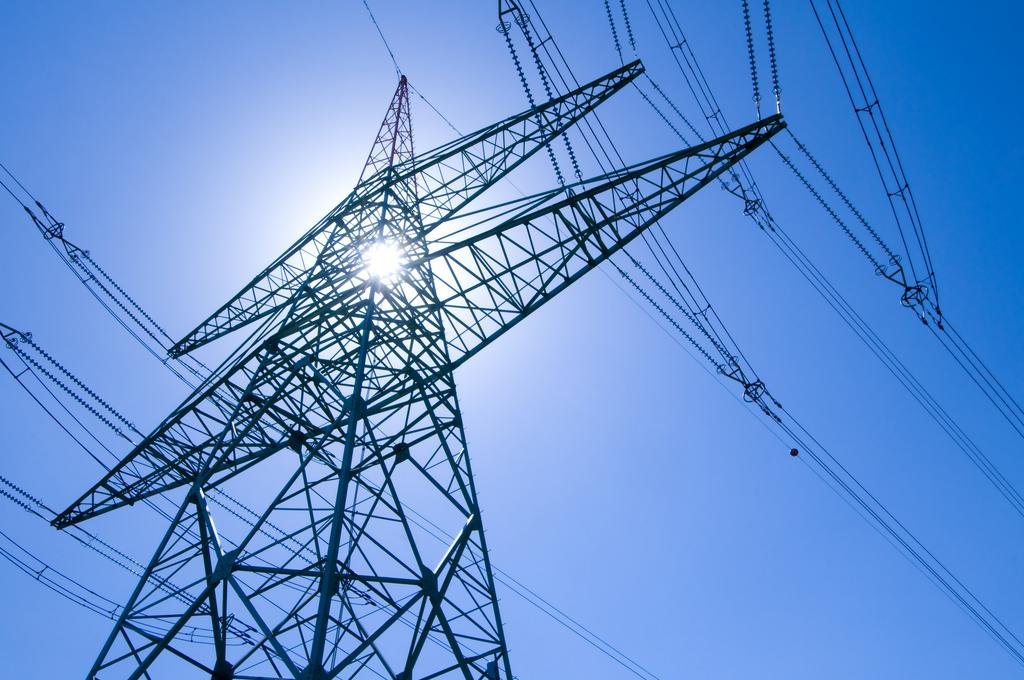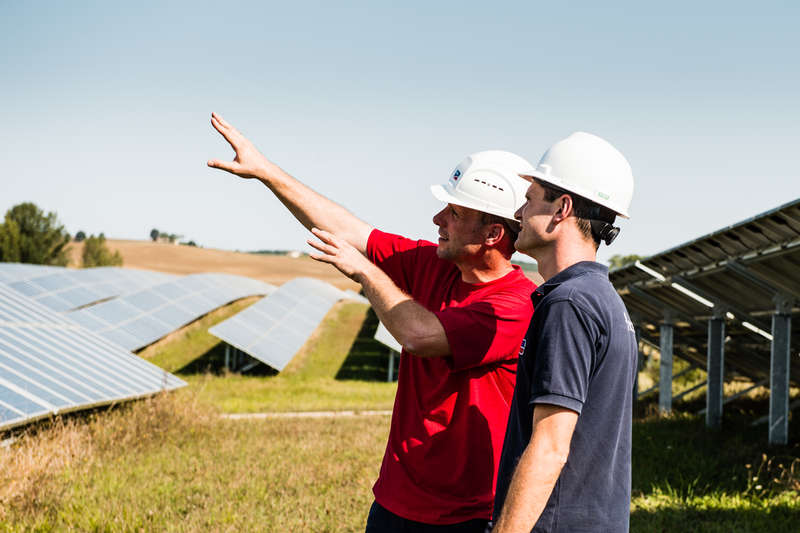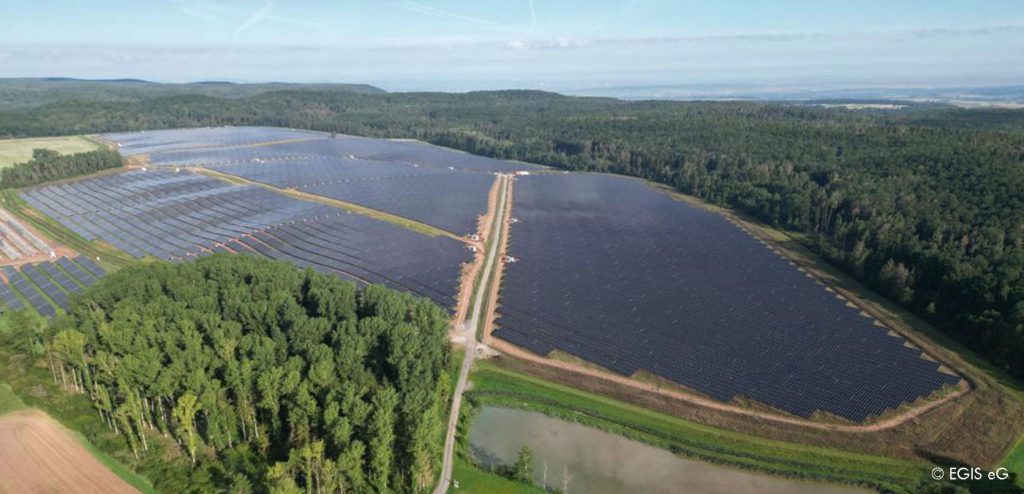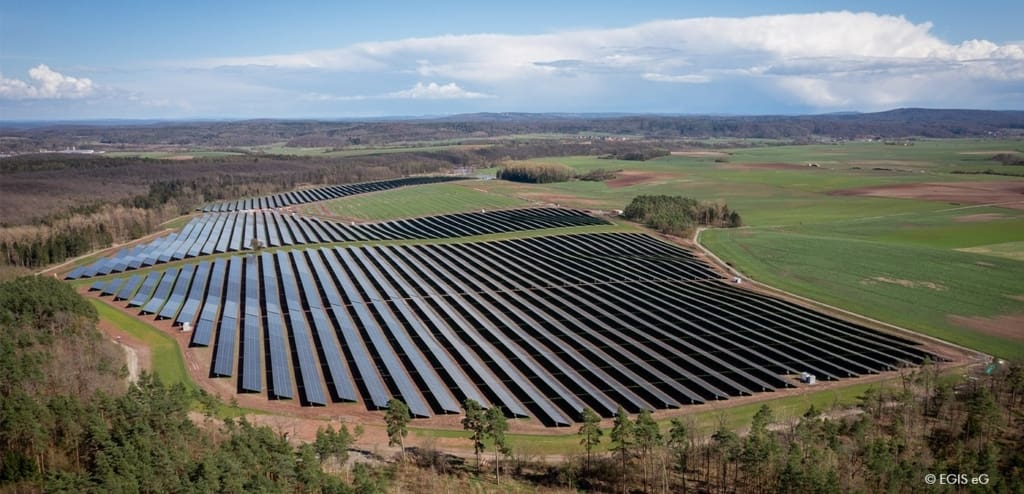Grid Integration of Distributed PV-Generation

The increasing grid penetration of renewable energy and decentralized power sources, and photovoltaics (PV) in particular, are resulting in an increase in the demands placed on the public utility grid. Most PV in Germany – the world’s largest PV market — is installed at the low- and medium-voltage grid level. This results in potential issues in low-voltage grids like temporarily high voltages at the end of long feeder lines. Although significant, this kind of issue can be solved with inverters featuring intelligent reactive power control, which help support grid stability by minimizing frequency deviations commonly associated with decentralized, renewable energy production.
Photovoltaic systems can also be used to stabilize frequency and voltage. Therefore an understanding of the behavior of PV energy production over large distances, like those found in utility-scale projects, is necessary. System operators must ensure reliable grid operation. The reliable operation of electrical grids depends on balancing two factors. In particular, these factors include active and reactive power. Grid operators have acquired corresponding services on the market to ensure this balance.
Grid Control Regulates Fluctuations
System services refer to ancillary electricity supply services that network operators provide their customers in addition to transmitting and distributing electrical power. Grid operators are among those organizing control energy and voltage stability to ensure system reliability. Balancing feed-in and consumption determines the frequency in the electrical system. The frequency increases if there is a surplus and drops if there is a shortage. Grid control regulates these frequency fluctuations. The frequency control is divided into fast (automatic) and slower (manual) control. In Europe, this is called primary, secondary, and tertiary control. In the U.S. and Canada this is called spinning reserve.
The electricity supply system is characterized by a lack of significant storage capacity. Energy production and consumption must therefore be kept in balance within narrow limits. The dynamics required by the types of control energy are described in the rules and regulations for each electrical system. The top priority of voltage stability is to maintain the transmission grid voltages in a safe, stable range, so no equipment or people are put at risk by excessive voltage.
In existing systems, these services are predominantly provided from the power plants in the extra-high voltage grid. The increasing practice of temporarily shifting the feed-in into subordinate grids and the associated reduced feed-in in the extra-high voltage grids creates a demand for system services to be provided from the low-voltage grid in the future.
The Impact of the Decentralized Feed-in on the Low-voltage Grid
In Germany, peak load is about 80 GW. With 29 GW installed, PV provided more than five percent of the electricity consumption in the first half of 2012. As shown in Figure 1, this means more than 40 percent of the electricity is generated by PV at times. As more than 80 percent of the PV systems are connected to the low-voltage grid, this high amount of PV energy production causes an inverse power flow on some feeders. Although this is theoretically no problem, many system operators fear problems if distributed generation exceeds a certain amount of the load, e.g. IEEE recommends that generation does not exceed more than 15 percent of the minimum
load at each feeder. In some German areas the PV generation is more than five times the load. That’s more than 30 times the IEEE recommendation. This proves that the system can be operated safely under these conditions without significant changes. However, as PV is expected to grow further there has been a recent paradigm shift concerning the behavior of power generation plants in the distribution grid. This was caused by the increasing importance of decentralized feed-in generators. Until recently, it was common to have PV units just connected to the grid without regard to stability. Recent changes in the region’s grid codes now require basic ancillary services to contribute to system stability.

Fig. 2: Minimum PV production for each month of the year. Even in winter, PV production exceeds 20 percent of installed PV peak power every day at noon where load is near its maximum.
Looking at Figure 1, one can see that PV covers the peak load very well. That’s because load and PV generation are highly correlated. Data shows that even in winter, PV generation reached at least 20 percent of the installed capacity during peak hours. Therefore PV can be seen as reliable contribution to power generation (see Figure 2).
Outlook
The end of development will not be reached with the impending grid connection conditions. Given that the share of renewable energy used in generating electricity is forecasted to increase, power generation plants will have to provide additional grid system services with the goal of minimizing the number of “must-run units.” To achieve this, national and international organizations are working on new grid codes and standards that set useful requirements for distributed generators.





Feel free to contribute!